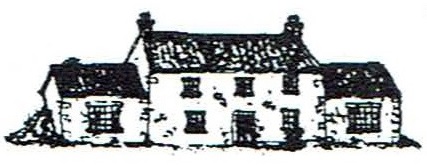PROTECTING LIME MORTAR?
All types of lime mortar require protection from adverse weather conditions both during application and afterwards while curing. For lime to cure correctly and to prevent a range of potential failures it must be kept in a slightly moistened state and insulated from extremes of temperatures; both high and low...
POSSIBLE PROBLEMS
Rapid or premature drying can result in a range of problems; from shrinkage and crazing, cracks, sandy or friable surface to complete failure to set. Low temperatures can result in delayed setting time, failure to set, or failure due to freeze thaw damage.
MOISTURE?
The moisture content of newly applied lime mortar must be managed for at least one week after
application. Over porous backgrounds the substrate should be dampened sufficiently before application to prevent active suction drying out the mortar from behind. After application, the newly applied lime should be dampened with a mist or light spray as required to maintain a moistened state.
TOO HOT?
Hot weather, direct sunlight and a drying wind will all dry out a fresh mortar at an increased rate. To minimise this exposure this the mortar should be covered with a protective layer such as hessian. For rendering work is recommended to hang hessian on the inside leaf of scaffolding, a short distance from the wall, the hessian can then be kept wet which will help maintain a damp climate for the mortar behind.
TOO COLD?
Lime’s hydraulic set requires a minimum temperature of 5 o C, while temperatures below this from 0-5 o C may not damage the mortar no setting action will occur. If the temperature drops below 0 o C this can cause freeze thaw damage, in which moisture in the mortar freezes and expands, resulting in partial or complete failure of the mortar. Generally lime should not be used externally if sub-zero temperatures are expected. If work must be undertaken it must be sufficiently insulated and
protected behind covering to ensure that the surface of the mortar remains above 0oC even if the
atmospheric temperature drops below this. This often requires multiple layers of protection. For
fully enclosed scaffolds with a solid cover a heat source can be introduced inside the scaffolding to
create an artificial climate and keep the temperature above 5 o C.
TIMING?
The length of time required before a lime mortar is sufficiently set to withstand freeze thaw damage
is dependent on the type of lime used and the curing conditions. Weaker lime mortars take a longer
time to reach sufficient strength to withstand damage. The length of time required, under ideal
conditions, can range from a few weeks to several months. Lower temperatures will slow this further
and during temperatures below 5 o C curing ceases completely.
NON NHL LIMES?
If using a non-hydraulic lime mortar such as lime putty or hot lime, which cure by carbonation only, a
minimum temperature of 10 o C is required. Effective carbonation will not occur below this and even
in ideal conditions this is a slow process, taking a minimum of several months for a mortar to
carbonate.
For more information, consult the St. Astier GUIDELINES on protecting lime mortar as well asguidelines from the Building Limes Forum Ireland on expected curing times and protection required
during cold weather found below.
